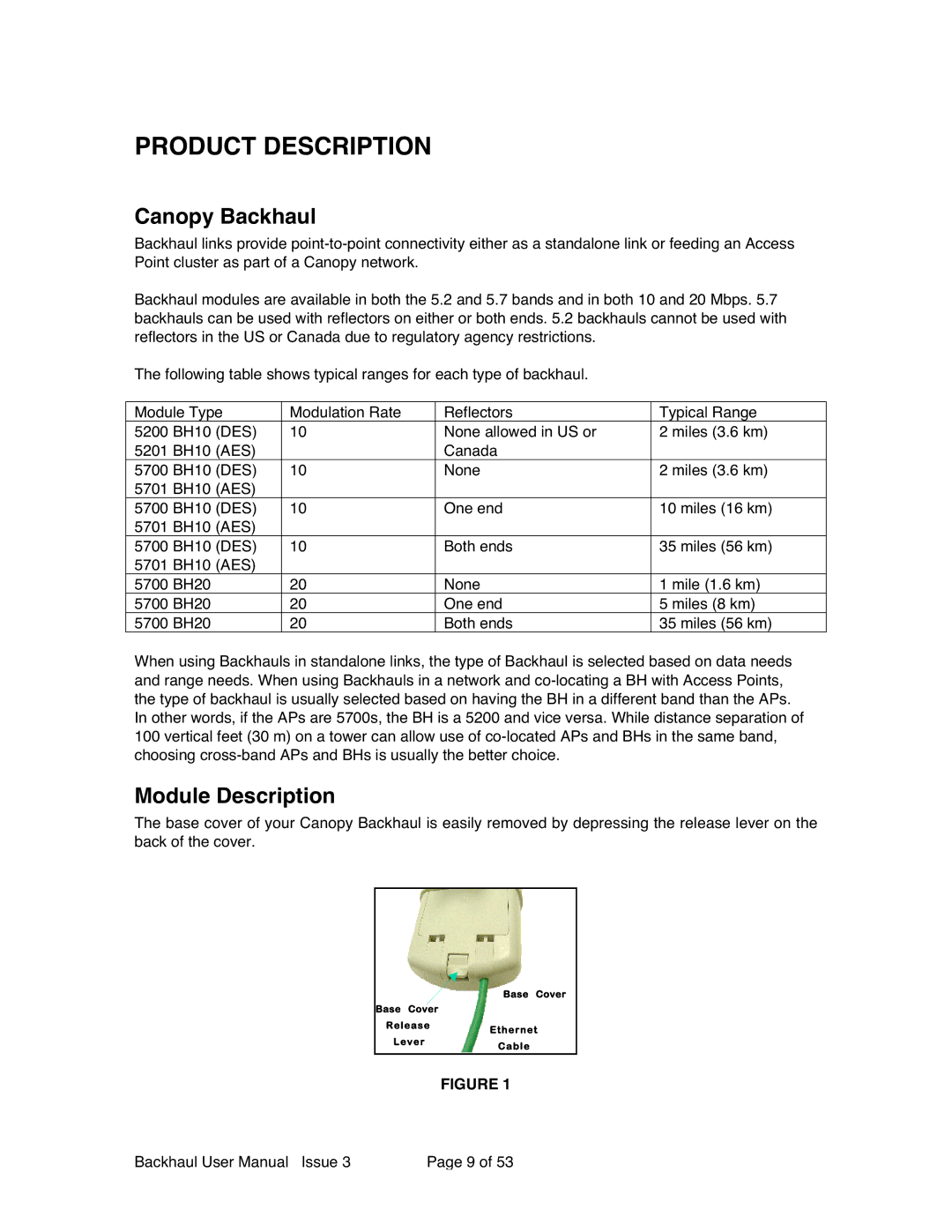
PRODUCT DESCRIPTION
Canopy Backhaul
Backhaul links provide
Backhaul modules are available in both the 5.2 and 5.7 bands and in both 10 and 20 Mbps. 5.7 backhauls can be used with reflectors on either or both ends. 5.2 backhauls cannot be used with reflectors in the US or Canada due to regulatory agency restrictions.
The following table shows typical ranges for each type of backhaul.
Module Type | Modulation Rate | Reflectors | Typical Range | |
5200 | BH10 (DES) | 10 | None allowed in US or | 2 miles (3.6 km) |
5201 BH10 (AES) |
| Canada |
| |
5700 | BH10 (DES) | 10 | None | 2 miles (3.6 km) |
5701 BH10 (AES) |
|
|
| |
5700 | BH10 (DES) | 10 | One end | 10 miles (16 km) |
5701 BH10 (AES) |
|
|
| |
5700 | BH10 (DES) | 10 | Both ends | 35 miles (56 km) |
5701 BH10 (AES) |
|
|
| |
5700 | BH20 | 20 | None | 1 mile (1.6 km) |
5700 | BH20 | 20 | One end | 5 miles (8 km) |
5700 | BH20 | 20 | Both ends | 35 miles (56 km) |
When using Backhauls in standalone links, the type of Backhaul is selected based on data needs and range needs. When using Backhauls in a network and
In other words, if the APs are 5700s, the BH is a 5200 and vice versa. While distance separation of 100 vertical feet (30 m) on a tower can allow use of
Module Description
The base cover of your Canopy Backhaul is easily removed by depressing the release lever on the back of the cover.
Base Cover
Base Cover
ReleaseEthernet
LeverCable
FIGURE 1
Backhaul User Manual Issue 3 | Page 9 of 53 |
